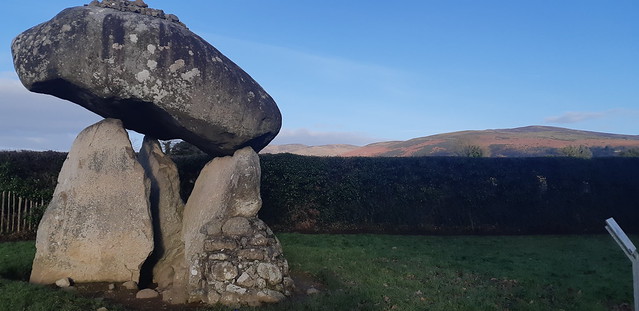You can learn more about the Goddess turned St.Brigid here in my prior blog post.

Brat Bríde or Ribín Bríde tradition – Tonight (January 31st) is the night that according to tradition, a piece of cloth or ribbon (Brat Bríde or Ribín Bríde) was left outside on the windowsill or near the door. This collected dew (the tears of the goddess) and was brought inside in the morning. This dew collection was thought to have been touched by Brigid on her travels and have the power to ward off illness, instill healing, and prevent pain in both humans and animals. When dried, the cloth/ribbon was taken and wrapped around yourself/ someone else (eg sore throat, cut finger) to help ward off illness and help with healing. Often you can see these pieces of cloth, tied in trees, outside homes, or in other holy sites if you know what to look for.

A place to rest – Another tradition related to the cloth and Brigid’s blessing involves making up a small bed in front of the fireplace / hearth – so that as Brigid travelled offering her blessings she could be offered a comfortable place of rest and contemplation. Often, a candle was left on the mantle, as a welcoming sign so that Brigid could see her way in, and an offering of bread was left in case she was hungry. A dusting of ash from the fire would be spread out in front of the hearth and any mark left in it the following morning was a sure sign that Brigid, the fire and fertility goddess, had been to bless your home. In this hearth bed (or in some cases, in your own) you would place a bridey doll.

What is a Bridey Doll?It is a representation of the triple goddess Brigid and was traditionally made from raffia, or dried grass, herbs and fabric. As you were making it, the doll would be sung to, told poetry, danced with around the home, left in front of the hearth with sweet herbs and flowers. Historically, these meant as a symbol of fertility, fortune, good health, and the reawakening of nature. On Brigid’s Eve, if you, or a loved one needed healing, wanted a child, or simply hoped that Brigid would bring her blessings to you, you would take the doll and place it with your loved one, in the bed made for Brigid, or under your pillow. They’re not difficult to make, and you can learn how to make one of your own here.

Finally, we move into the symbol most people know, the Brigid’s Cross. A symbol of equality, this cross is usually made of green rushes or palm fronds and woven together with a center square before the ends are tied together. They are hung in homes over doors and windows as symbols of protection and remain there (drying out) before being removed and replaced with a newly woven “green” cross the following year. The old one is burned in the fire to destroy any of the negative energies it might have prevented from entering the home.
The Brigid’s cross has four arms that are of the same length and believed to represent the “sunwheel” with rays of the sun projecting out from the center – a symbol of springtime, a return of the light via the lengthening of days. In Christianity, the arms represent the four cardinal directions (N,S,E,W) and the center represents the spirit and mind of the person. Today, it’s a symbol of Irish Celtic ancestry and heritage.
Stay tuned for tomorrow, when I tell the tale of the eternal flame of Brigid – and how I received the honor of lighting the flame you see above.




